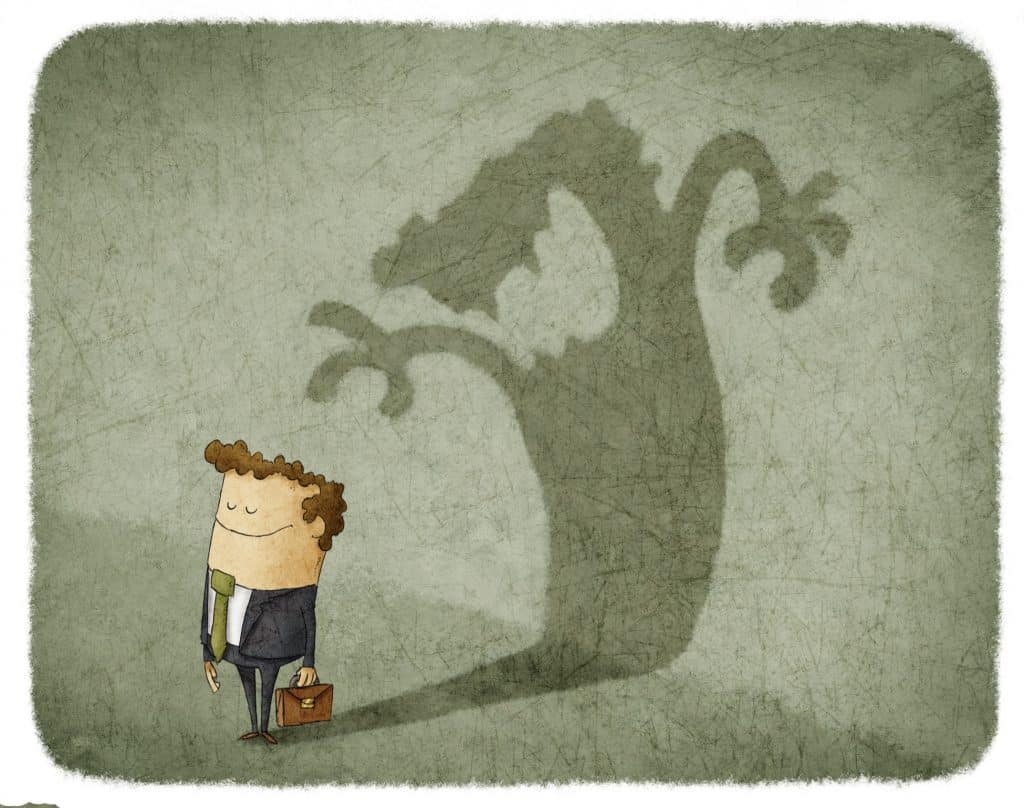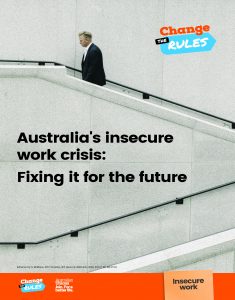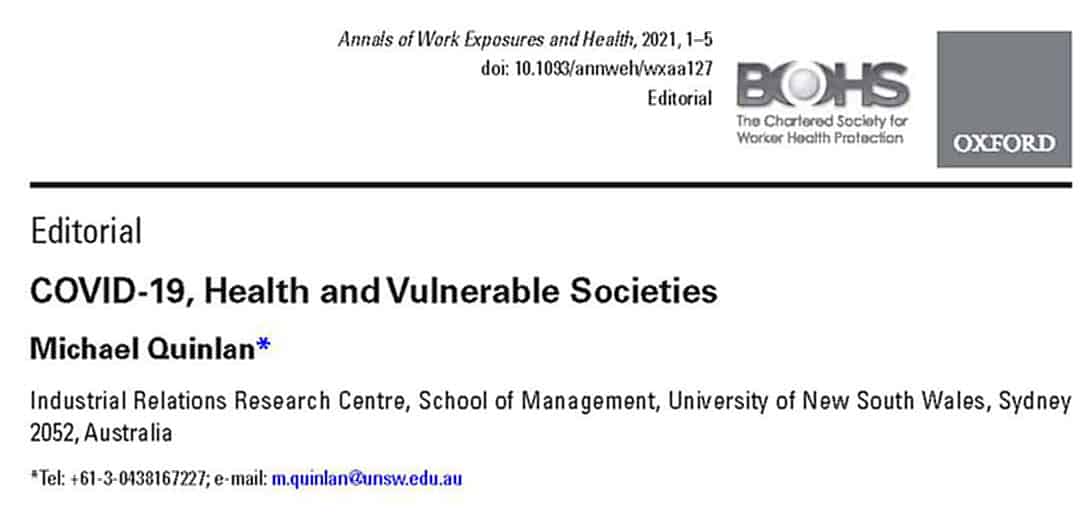In the middle of a pandemic, it is easy to be locked into small issues, especially if they directly relate to you, such as lockdowns or sick relatives but it is important to be reminded of the broader social context. Professor Michael Quinlan recently wrote an editorial for the Annals of Work Exposures and Health, entitled “COVID-19, Health and Vulnerable Societies”.
Category: quality of work
Beware a resurgence in Danger Money

“Danger Money” is an occupational health and safety (OHS) and Industrial Relations (IR) concept that must always be watched out for as it can perpetuate a hazard or risk in apparent contravention of the OHS legislative obligations that each employer and worker carries. The concept is at risk of reappearing as the role, income and wages of essential workers are reassessed in this time of COVID19 pandemic and economic reinstatement.
The next gig job must be safer and healthier

bowie15
A lot of focus is currently on casual workers as their jobs disappear due to the responses to the COVID19 coronavirus. Australia has around 2.6 million of them and there are many more workers who may be classified as Part Time but operate on uncertain rosters and are, in reality, as precarious as casual employees. Occupational health and safety (OHS) is struggling to address the hazards presented by modern variations of precarious work, such as gig economy workers, because it, and government economic and employment policy more generally, is structured on the assumption of Full Time Employment (FTE) with work occurring mainly from nine to five, on weekdays with weekends off.
Consideration of precarious worker OHS may seem a lesser priority at the moment as many of us are quarantined or quarantine by choice but at some point, hopefully, within the next twelve months, business will resume. However, that business model and structure is unlikely to be the same. Indeed, it should not be same as the risk profile for all businesses and the community generally has changed. So, let’s have a look at some of the recent thinking about precarious work and the OHS risks so that we can build a better, safer model.
Ethics, safety and fingertips

Last week the Australian Institute of Health and Safety (AIHS) launched its Body of Knowledge Chapter on Ethics in Melbourne to a small group of occupational health and safety (OHS) professionals. Participants were asked to outline an ethical challenge they had faced as OHS professionals.
In that same week, WorkSafe Victoria issued a media release that showed a poor follow-through by a business on advice from an OHS professional.
Language, labels, thoughts and restraints

Carsten Busch is a committed voice for improvement in occupational health and safety (OHS) and our understanding of it. Recently he published a research paper entitled “Brave New World: Can Positive Developments in Safety Science and Practice also have Negative Sides?” (open access). The paper is of note for several reasons, not including the use Aldous Huxley’s 1932 novel “Brave New World” a book about a dystopia that many Australian high school students in the 1970s were required to read.
Dystopian novels suit the study of OHS as the structure often reflects a character with new experiences of an unfamiliar culture or an awakening or realisation of their place in the world. Brave New World fits the former and George Orwell’s 1984, the latter. OHS professionals often step into a workplace culture that is foreign to what they have understood to be the norm. They evaluate the new culture, find it wanting and suggest repairs, if they can. Over time some OHS professionals, often through an epiphany, realise that they have not achieved what they expected and either leave or turn on the OHS discipline. Some OHS professionals are able to blend both these experiences and perspectives.
AS/NZS ISO45001:2018 status update
Australia, as are many other countries, is in the transition phase for the latest Standard for Occupational Health and Safety Management Systems – ISO45001. The Standard has been accepted by Australia as relevant to its jurisdiction and discussion seem quiet. However, the work of the technical committee on this Standard (SF-001) continues. The Head of the Delegation for Standards Australia responsible for the 45001 series of Standards, David Solomon, provided the following status update.

ISO (International Organization for Standardization) has formed a new International Technical Committee (TC283) that has been charged with the responsibility of developing the following standards that are in the suite of international Standards that ISO45001 leads.
Fixing the future by planning for the future
 The Australian Council of Trade Unions (ACTU) often sets the occupational health and safety (OHS) agenda, as it did on workplace stress and bullying. On 21 May 2018 the ACTU released a research report entitled “Australia’s insecure work crisis: Fixing it for the future“. The opening paragraph provides a clear indication of the report’s tone:
The Australian Council of Trade Unions (ACTU) often sets the occupational health and safety (OHS) agenda, as it did on workplace stress and bullying. On 21 May 2018 the ACTU released a research report entitled “Australia’s insecure work crisis: Fixing it for the future“. The opening paragraph provides a clear indication of the report’s tone:
“The incidence of non-standard work in Australia is alarming. The fact that our national government and some employer groups seek to deny this reality and refuse to support reforms to better protect workers in insecure non-standard employment is a disgrace.”
There is a lot of useful information in this report but there is also a lot missing, a lot that could affect workplace safety.

